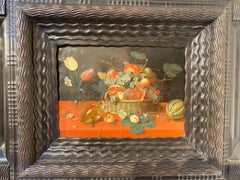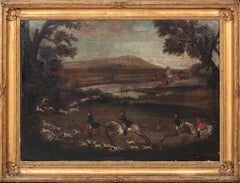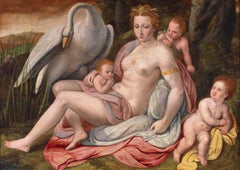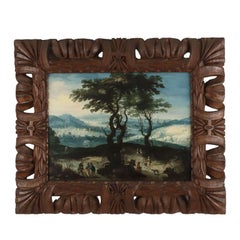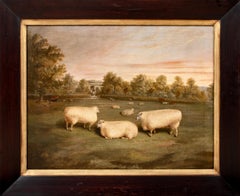16th Century Paintings
Old Masters 16th Century Paintings
Oil
Other Art Style 16th Century Paintings
Oil
16th Century Paintings
Canvas, Oil
16th Century Paintings
Canvas, Oil
16th Century Paintings
Oil, Canvas
16th Century Paintings
Canvas, Oil
16th Century Paintings
Oil, Wood Panel
16th Century Paintings
Oil, Canvas
16th Century Paintings
Copper
16th Century Paintings
Canvas, Oil
Old Masters 16th Century Paintings
Oil
Old Masters 16th Century Paintings
Wood, Egg Tempera, Wood Panel
Old Masters 16th Century Paintings
Canvas, Oil
Old Masters 16th Century Paintings
Oil, Wood Panel
Old Masters 16th Century Paintings
Oil
Old Masters 16th Century Paintings
Oil, Panel
Old Masters 16th Century Paintings
Oil
Old Masters 16th Century Paintings
Oil
Old Masters 16th Century Paintings
Oil
Other Art Style 16th Century Paintings
Oil
Old Masters 16th Century Paintings
Wood Panel, Oil
Medieval 16th Century Paintings
Wood Panel
16th Century Paintings
Wood Panel, Oil
16th Century Paintings
Wood Panel, Oil
Mannerist 16th Century Paintings
Oil, Wood Panel
Mannerist 16th Century Paintings
Tempera, Canvas
Other Art Style 16th Century Paintings
Oil
Other Art Style 16th Century Paintings
Oil
Other Art Style 16th Century Paintings
Oil
16th Century Paintings
Oil, Canvas
Old Masters 16th Century Paintings
Canvas, Cotton Canvas, Oil
16th Century Paintings
Oil, Panel
16th Century Paintings
Oil, Canvas
16th Century Paintings
Oil, Canvas
16th Century Paintings
Panel, Oil
Flemish School 16th Century Paintings
Oil, Panel
Old Masters 16th Century Paintings
Oil, Wood Panel
Flemish School 16th Century Paintings
Oil, Panel
16th Century Paintings
Panel, Oil
Old Masters 16th Century Paintings
Oak, Oil
Old Masters 16th Century Paintings
Oil, Oak
Old Masters 16th Century Paintings
Oil, Canvas
Old Masters 16th Century Paintings
Oil
16th Century Paintings
Oil
Renaissance 16th Century Paintings
Oil, Board
Old Masters 16th Century Paintings
Oil
Old Masters 16th Century Paintings
Ink, Gouache, Pen
16th Century Paintings
Oil, Canvas
Renaissance 16th Century Paintings
Oil, Wood Panel
Old Masters 16th Century Paintings
Oil, Panel
Old Masters 16th Century Paintings
Oil, Wood Panel
Old Masters 16th Century Paintings
Oil
16th Century Paintings
Canvas, Oil
Renaissance 16th Century Paintings
Canvas, Oil
16th Century Paintings
Oak, Oil
16th Century Paintings
Oil, Canvas
Old Masters 16th Century Paintings
Oil
Old Masters 16th Century Paintings
Oil, Panel
Read More
Art Brings the Drama in These Intriguing 1stDibs 50 Spaces
The world’s top designers explain how they display art to elicit the natural (and supernatural) energy of home interiors.
Welcome (Back) to the Wild, Wonderful World of Walasse Ting
Americans are rediscovering the globe-trotting painter and poet, who was connected to all sorts of art movements across a long and varied career.
In Francks Deceus’s ‘Mumbo Jumbo #5,’ the Black Experience Is . . . Complicated
Despite the obstacles, the piece’s protagonist navigates the chaos without losing his humanity.
With Works Like ‘Yours Truly,’ Arthur Dove Pioneered Abstract Art in America
New York gallery Hirschl & Adler is exhibiting the bold composition by Dove — who’s hailed as the first American abstract painter — at this year’s Winter Show.
Donald Martiny’s Jumbo Brushstrokes Magnify the Undeniable Personality of Paint
How can a few simple gestures — writ extra, extra, extra large — contain so much beauty and drama?
Patrick Hughes’s 3D Painting Takes Us on a Magical Journey through Pop Art History
The illusions — and allusions — never end in this mind-boggling portrayal of an all-star Pop art show on a beach.
Mid-Century Americans Didn’t Know Antonio Petruccelli’s Name, but They Sure Knew His Art
The New York artist created covers for the nation’s most illustrious magazines. Now, the originals are on display as fine art.
Learn Why There Have Been So Many Great Women Painters
Featuring iconic works by more than 300 female artists, a new book makes a more than compelling case for casting off the patriarchal handcuffs that have bound the art historical canon for far too long.
